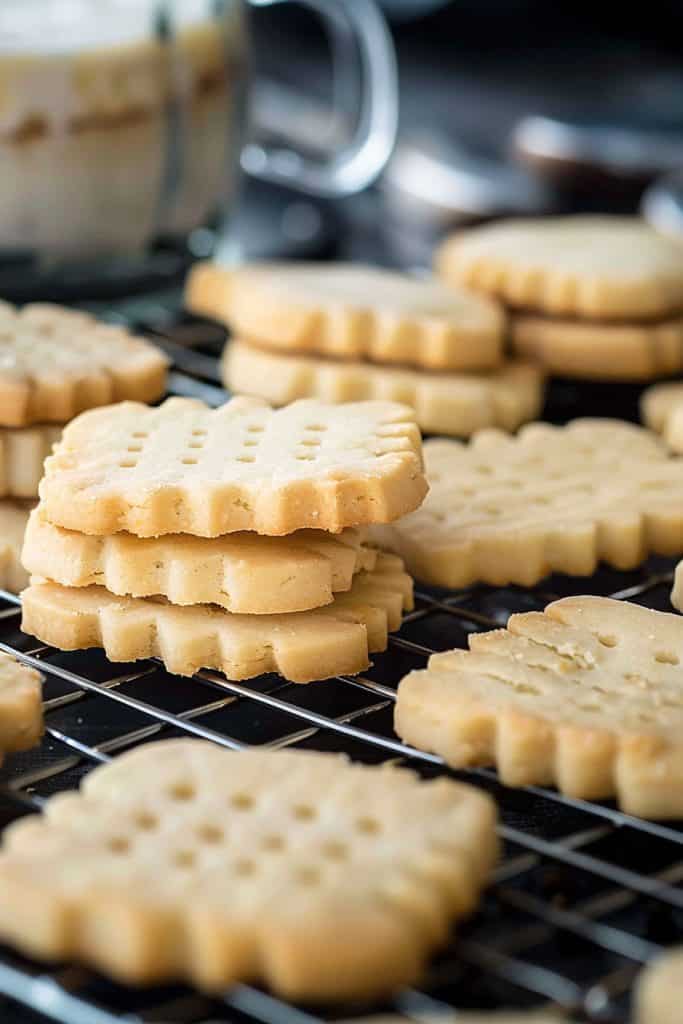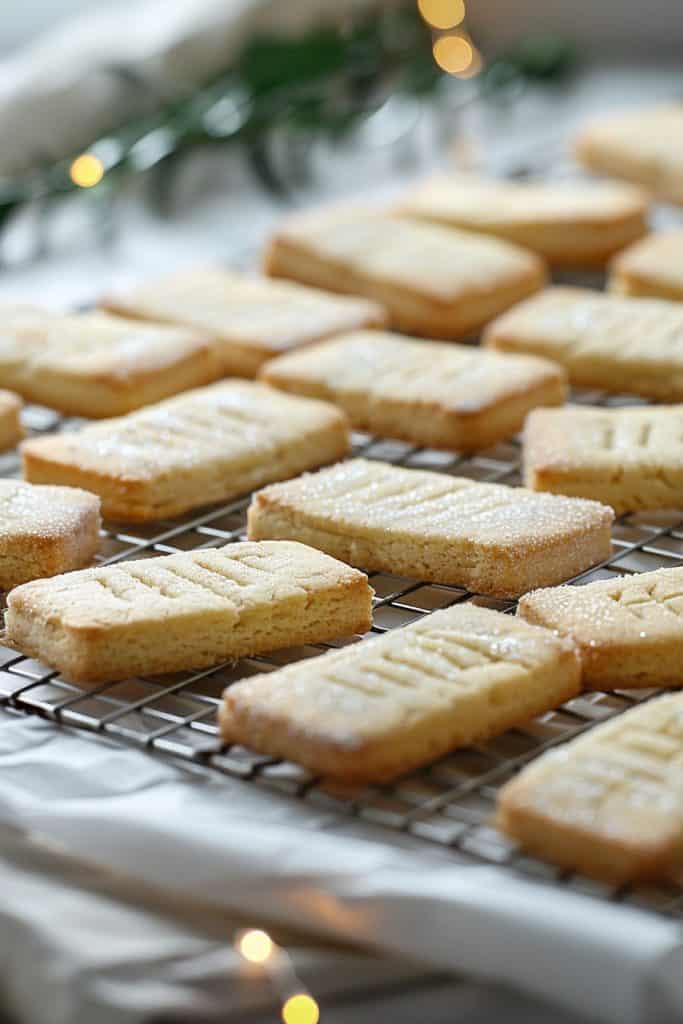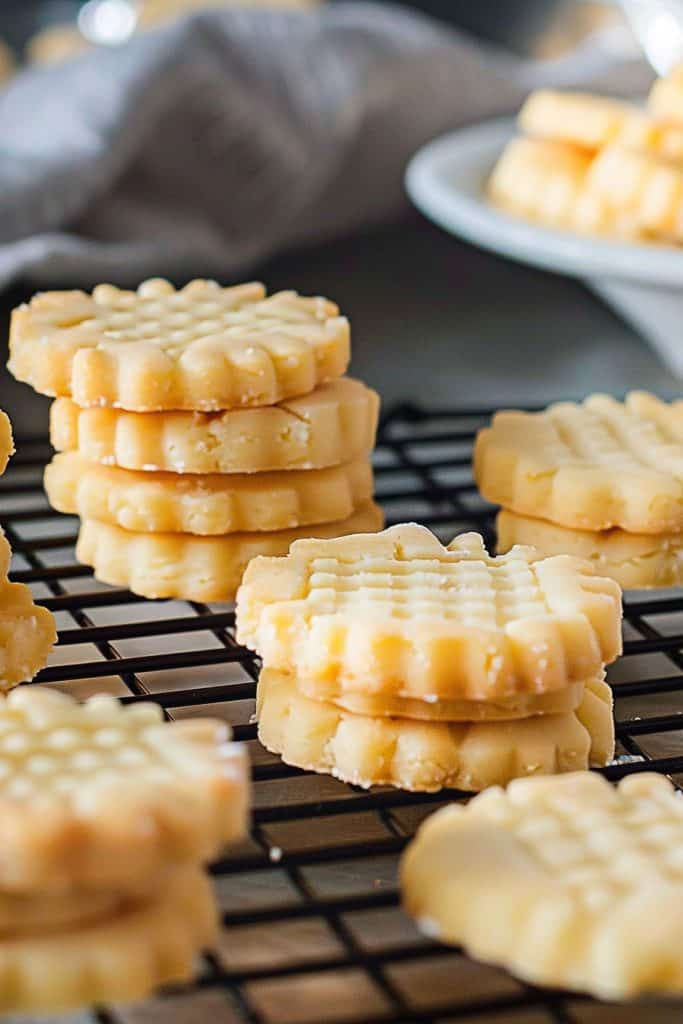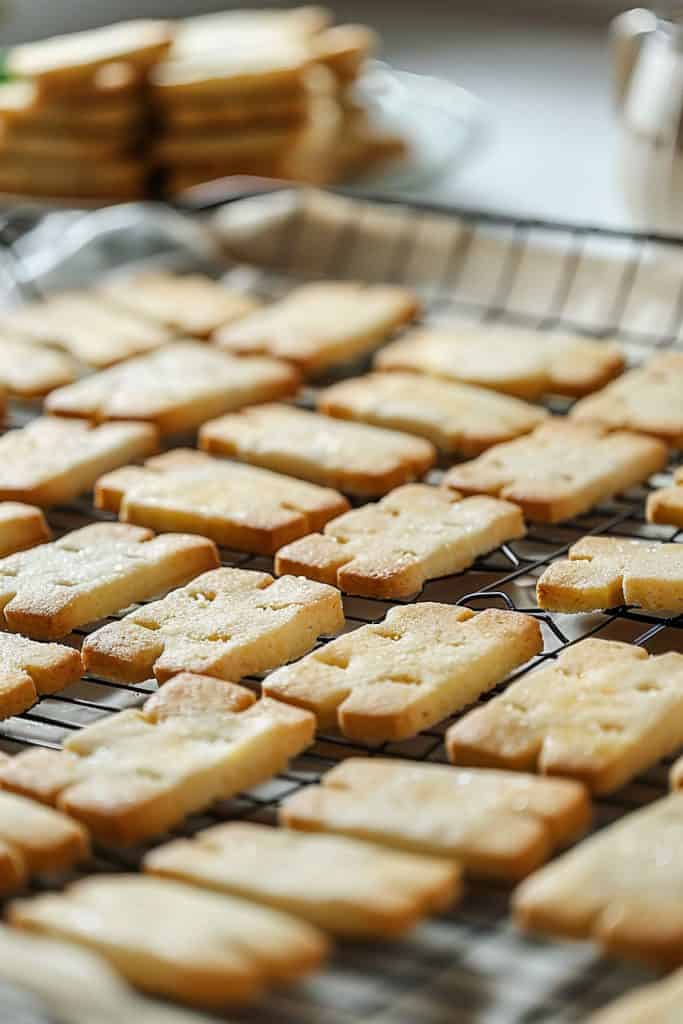There’s something undeniably charming about shortbread cookies. With their buttery richness and tender crumb, they evoke a sense of nostalgia and comfort. Originating from Scotland, these classic treats have a simple elegance that makes them perfect for any occasion, whether it’s a holiday celebration or a cozy afternoon tea.
I love how versatile shortbread cookies can be. You can keep them plain and traditional or get creative with flavors like lavender, lemon, or even chocolate. Plus, they’re incredibly easy to make, requiring just a few basic ingredients you probably already have in your pantry. Let’s dive into the world of shortbread cookies and discover some delightful variations that will surely become your new favorites.

Ingredients for Shortbread Cookies
When crafting these delightful shortbread cookies, you’ll find that simplicity is key. Using just a few basic ingredients, we can create a treat that is both comforting and elegant. Here’s what you’ll need:
Main Ingredients
- 1 cup (2 sticks) unsalted butter: Ensure it’s at room temperature for easy mixing.
- 1/2 cup granulated sugar: Adds the perfect amount of sweetness.
- 2 cups all-purpose flour: Gives structure to our cookies.
- 1/4 teaspoon salt: Balances the flavors.
- 1 teaspoon vanilla extract: For added depth and warmth.
- 1 tablespoon finely grated lemon zest: Adds a zesty, citrusy note.
- 2 tablespoons cocoa powder: For chocolate lovers.
These ingredients lay the foundation for classic shortbread cookies, and experimenting with the optional additions can help customize flavors to your liking. Now, let’s move on to the step-by-step instructions for making these delicious cookies.
Essential Tools and Equipment
When making shortbread cookies, having the right tools at hand ensures a smooth baking process and perfect results. Here’s a list of what you’ll need:
Mixing Tools
- Large Mixing Bowl: Necessary for combining all the ingredients evenly.
- Wooden Spoon Or Electric Mixer: A wooden spoon works for mixing by hand, but an electric mixer saves time and effort for creaming the butter and sugar.
Measuring Instruments
- Measuring Cups And Spoons: Precise measurements of all ingredients are crucial for the perfect balance of flavors.
- Kitchen Scale (Optional): For those who prefer to weigh ingredients for accuracy, especially the flour and butter.
Baking And Shaping Tools
- Rolling Pin: Essential for rolling out the dough to an even thickness, ensuring uniform cookies.
- Cookie Cutters: Use various shapes to add a fun and personal touch to your cookies. Alternatively, you can use a knife to cut the dough into squares or rectangles.
- Parchment Paper Or Silicone Baking Mats: Line your baking sheet to prevent the cookies from sticking and to ensure easy cleanup.
- Baking Sheet: A flat sheet is necessary to bake the cookies evenly.
- Cooling Rack: Allows cookies to cool completely without becoming soggy on the bottom.
- Plastic Wrap Or Ziplock Bags: Useful for chilling the dough before baking, which helps maintain the shape of the cookies and improves texture.
With these tools and equipment, you’re well-prepared to bake a batch of delicious, buttery shortbread cookies. Ensure everything is within reach, and you’ll find the baking process seamless and enjoyable.

How to Make Shortbread Cookies
Making shortbread cookies is a straightforward process that yields delectable results. Follow these steps to create buttery, melt-in-your-mouth cookies.
Step 1: Preheat Oven and Prep Baking Sheets
Preheat your oven to 350°F (175°C). Line two baking sheets with parchment paper or silicone baking mats. This prevents the cookies from sticking and ensures even baking.
Step 2: Make the Dough
In a large mixing bowl, cream together 1 cup (2 sticks) of unsalted butter, softened to room temperature, and 1/2 cup of granulated sugar using a wooden spoon or an electric mixer set on medium speed. Mix until the mixture is smooth and creamy.
Add 1 teaspoon of vanilla extract and mix until combined. Gradually add 2 cups of all-purpose flour and 1/4 teaspoon of salt. Mix on low speed just until the dough starts to come together. Be careful not to overmix to avoid tough cookies.
Step 3: Form and Shape the Dough
Turn the dough out onto a lightly floured surface. Use a rolling pin to roll the dough to about 1/4 inch thickness. If the dough is too sticky, wrap it in plastic wrap and chill it in the refrigerator for 15 minutes.
Use your favorite cookie cutters to cut out shapes, then gently transfer the cutouts to the prepared baking sheets, spacing them about 1 inch apart. If you find it hard to move the shapes, use a flat spatula for assistance.
Step 4: Bake the Cookies
Place the baking sheets in the preheated oven and bake for 12-15 minutes or until the edges of the cookies start to turn a light golden brown. Rotate the baking sheets halfway through baking for even cooking.

Customizing Your Shortbread Cookies
Customizing your shortbread cookies allows you to infuse personal touches and create unique flavors that stand out. Here are a few ideas and steps to take your shortbread cookies to the next level.
Adding Flavor Extracts
One of the simplest ways to customize your shortbread cookies is by adding different flavor extracts. Along with the traditional vanilla extract, consider incorporating:
- 1/2 teaspoon almond extract for a nutty undertone
- 1 teaspoon peppermint extract for a refreshing twist
- 1/2 teaspoon coconut extract for a tropical flavor
Simply mix these extracts into the dough during the creaming process.
Incorporating Mix-Ins
Make your shortbread exciting by adding various mix-ins. Here are some popular options:
- Chocolate Chips: Add 1/2 cup of mini chocolate chips for a delightful bite of chocolate in every cookie.
- Nuts: Incorporate 1/2 cup of finely chopped nuts, such as pecans or almonds, for added crunch.
- Dried Fruits: Use 1/3 cup of dried cranberries or cherries to introduce subtle sweetness and chewiness.
Fold these mix-ins gently into the dough just before shaping it.
Creating Zesty and Herby Variations
Introduce fresh and vibrant flavors with zests and herbs. Try these combinations:
- Lemon Zest: Add 1 tablespoon of finely grated lemon zest for a tangy zing.
- Lavender Buds: Incorporate 1 teaspoon of dried culinary lavender buds for a floral aroma.
- Fresh Herbs: Add 1 tablespoon of finely chopped rosemary or thyme for an earthy touch.
Mix these ingredients into the dough with the flour and salt to ensure even distribution.
Decorating and Finishing
Finish your customized shortbread cookies with decorative touches that elevate their visual appeal:
- Glaze: After baking, drizzle your cookies with a simple glaze made from powdered sugar and milk.
- Sprinkles: Press seasonal or themed sprinkles lightly into the dough before baking.
- Sugars: Roll the edges of the dough in decorative sugars for an extra sparkle.

Tips for Perfect Shortbread Cookies
Use High-Quality Ingredients
I always start with the best ingredients. Use high-quality butter because it forms the base of shortbread’s rich flavor. Unsalted butter allows you to control the salt content better. Opt for pure vanilla extract over imitation for the best taste.
Measure Ingredients Accurately
Accuracy is key in baking. I measure flour by spooning it into the measuring cup and leveling it off with a knife. Too much flour can result in dry cookies. For precise results, consider using a kitchen scale.
Keep the Dough Cool
Maintaining dough temperature is crucial. After mixing, chill the dough for at least 30 minutes. This step prevents the cookies from spreading too much while baking and helps them maintain their shape.
Don’t Overwork the Dough
Overmixing can toughen the dough. When you add flour to the butter mixture, mix just until incorporated. I gently bring the dough together with my hands to avoid overworking it.
Prick the Dough with Fork
Before baking, I prick the surface of the dough with a fork. This technique, known as “docking”, allows steam to escape and prevents the cookies from puffing up.
Use Parchment Paper
Line your baking sheets with parchment paper. It prevents sticking and ensures even baking. Plus, it makes cleanup easy.
Pay Attention to Baking Time
Baking time is crucial for perfect shortbread. I bake the cookies until they are just lightly golden around the edges. Overbaking can lead to dry, crumbly cookies, so keep a close eye on them.
Cool Completely Before Serving
Let the cookies cool on the baking sheet for a few minutes after removing them from the oven. Then transfer them to a wire rack to cool completely. This step enables the cookies to firm up and develop their texture.
Store Properly
For the best freshness, I store cooled cookies in an airtight container. If you want to keep them longer, shortbread cookies freeze well.
By following these tips, you’ll achieve buttery, perfectly textured shortbread cookies every time.

Make-Ahead Instructions
Making shortbread cookies ahead of time can save you effort during busy days and ensure you always have treats ready for any occasion. Here’s my step-by-step guide for preparing these delectable cookies in advance:
- Prepare the Dough: Follow your shortbread cookie recipe to mix the dough. After combining all ingredients, shape the dough into a disc or log, depending on your preferred cookie shape.
- Wrap the Dough: Carefully wrap the prepared dough in plastic wrap. Ensure that it is tightly sealed to prevent any air from entering, which could dry out the dough.
- Chill the Dough: Place the wrapped dough in the refrigerator. You can store it for up to 3 days if you plan to bake within a short timeframe. For longer storage, move on to freezing.
- Freeze the Dough: If you want to make the dough well in advance, transfer the wrapped dough to a freezer-safe bag or container. Label it with the date, and you can freeze it for up to 2 months.
- Thaw Before Baking: When ready to bake, remove the dough from the freezer and let it thaw in the refrigerator overnight. This ensures the dough is workable and bakes evenly.
- Slice and Bake: Once the dough is thawed if you’ve shaped it into a log, slice it into even pieces and bake following your recipe’s instructions. If it’s in a disc, roll it out, cut into shapes, and then bake.
Make-ahead shortbread cookies maintain their delightful buttery texture and flavor, making it easy to enjoy fresh homemade cookies anytime.
How to Store Shortbread Cookies
Cooling and Initial Storage
After you’ve baked your golden-brown shortbread cookies and allowed them to cool completely on a wire rack, the first step is to ensure they are not exposed to moisture. Moisture can make the cookies lose their signature crisp texture. Therefore, I allow them to cool fully to room temperature before moving to storage.
Room Temperature Storage
For storing shortbread cookies at room temperature, I prefer using an airtight container. Layer the cookies with parchment paper between each layer to prevent sticking and to maintain their shape. This method keeps the cookies fresh and crisp for up to one week.
Refrigeration
If you want to extend the storage time, you can refrigerate the cookies. Place the shortbread cookies in an airtight container, again using parchment paper between layers. Refrigerated shortbread cookies can last up to two weeks, preserving their buttery richness while maintaining the crispness.
Freezing
For long-term storage, freezing is an excellent option. I typically use a freezer-safe zip-top bag or an airtight container, with layers of parchment paper to separate the cookies to prevent sticking. When stored properly in the freezer, shortbread cookies can last up to three months. When you’re ready to enjoy them, simply thaw the cookies at room temperature for about 15-30 minutes.
Preventing Flavor Absorption
Regardless of your chosen storage method, avoid storing shortbread cookies near strong-smelling foods. The cookies can easily absorb other odors, which can compromise their delicate flavor. Therefore, I suggest keeping them in a dedicated airtight container away from items like onions or garlic in the refrigerator or freezer.

Conclusion
Shortbread cookies are a delightful treat that anyone can master with a bit of practice. Their simplicity and rich flavor make them a favorite for many occasions. By following the steps and tips I’ve shared, you’ll be able to create perfect shortbread cookies every time. Remember to use high-quality ingredients and handle the dough with care. Proper storage will also ensure your cookies stay fresh and delicious. Happy baking!
